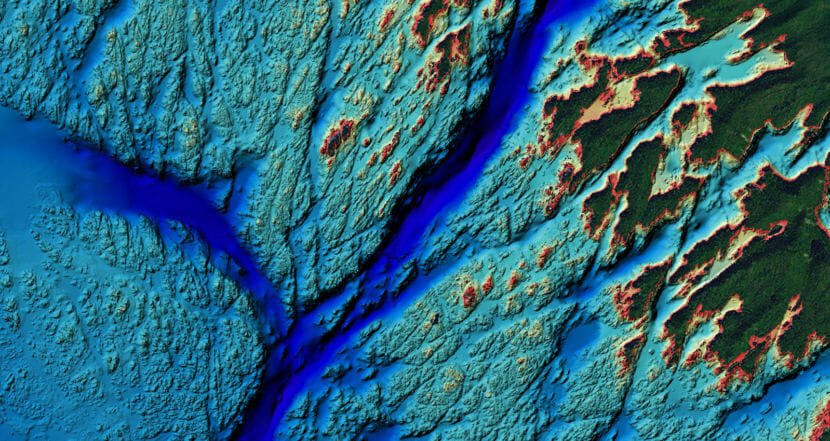
They say a rising tide lifts all boats, but what about a rising data set?
The Alaska Longline Fishermen’s Association is nearing completion of a bathymetric map to help local fishermen catch more efficiently. The map was made possible through a network of small boat fishermen that have spent the past decade gathering data on the bottom of the sea floor.
Stephen Rhoads was exploring the open ocean with the click of a mouse.
“This is a great image of how good our data is getting,” he told a group of fellow fishermen.
A bathymetric map that details the rise and fall of the ocean floor, Rhoads demonstrated the latest version during a workshop Tuesday afternoon.
Sitka Sound is presented in vivid detail.
“To the west of that is state data and to the east of that is our user data,” Rhoads said. “We’re getting pretty close on the shape of the bottom.”
Fishermen have long used soundings to visualize in their mind what the seafloor looks like and target species known to gather near certain topographical features.
With these maps, Rhoads is able to home in on those locations more precisely.
Rhoads toggles with a slider, which paints the map with colors to represent different depths.
“Most of the time when I’m fishing, I use the discrete mode because my brain gets stuck in, ‘Fish in the green, that’s where they’re at.’”
The fishermen in the room are more than the future users of this product.
They were its data scientists too, pinging the seafloor with echo sounds for years while out fishing.
At the end of every season, the Fishery Conservation Network sent their data to the Alaska Longline Fishermen’s Association.
Like pieces of a puzzle, the fishermen’s association reconciled the local data set with federal and state maps, working in concert with a software company called Nobletec TimeZero.
Executive Director Linda Behnken said the result is one of the most complex bathymetric databases on the eastern side of the Gulf of Alaska.
“ One-hundred-forty-million data points have been contributed. It’s been a lot of years getting to this point,” she said. “We’re really excited about the level of detail we have now and the quality of the maps.”
The fishermen’s association is now ready to share these maps with the fishermen who helped make them. The .xyz file can be run on a $1,000 computer that supports the Nobletec software.
Fishermen are invited to contribute to and cleanup the data set while out on the water.
The goal of all of the bathymetry project is to make Sitka’s small boat fleet more competitive and efficient.
Behnken said the project was born out of a desire to help the fleet target the fish they want and avoid the fish they don’t.
“For example, halibut tend to be hard bottom areas rather than sandier, muddy bottom,” she said. “But if you get into hard bottom with too many pinnacles, then you get too many rockfish.”
In addition to reducing bycatch, Behnken hopes the maps will help fishermen avoid areas that host sensitive species, like corals and sponge, and protect their gear.
Fishermen can start downloading the database on March 15.
The maps are available to all ALFA members in good standing at $600.
The Nobletec software costs $3,000.
All participating fishermen will sign user agreements pledging not to share the data outside of the network.
